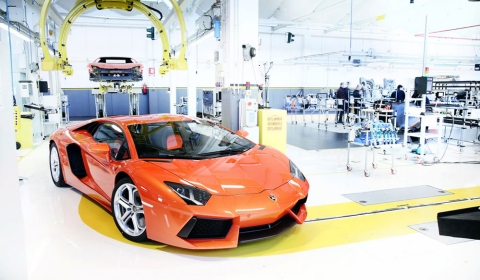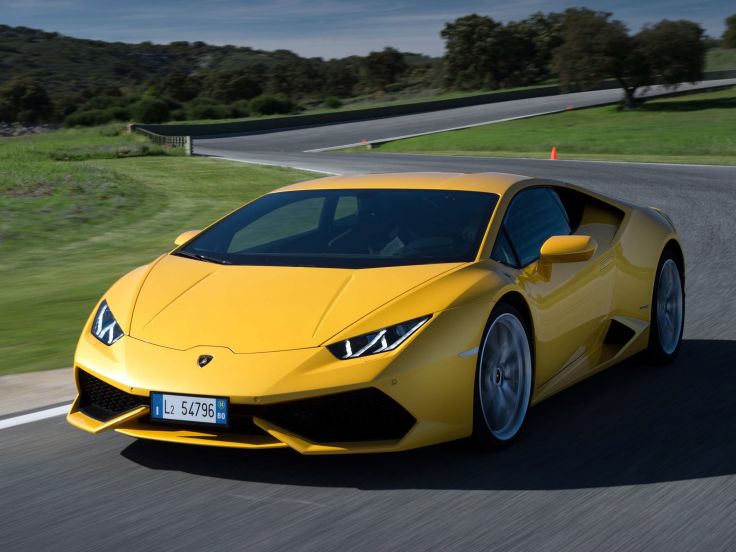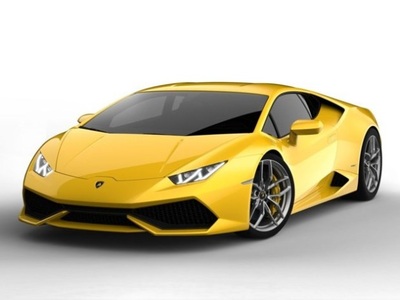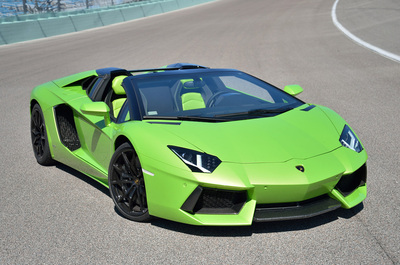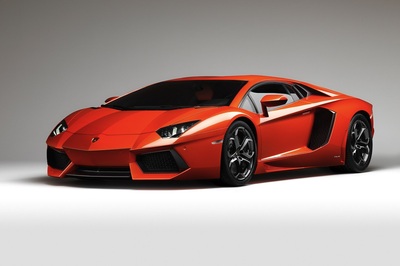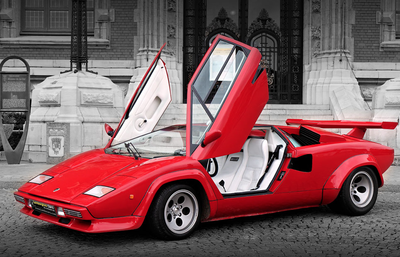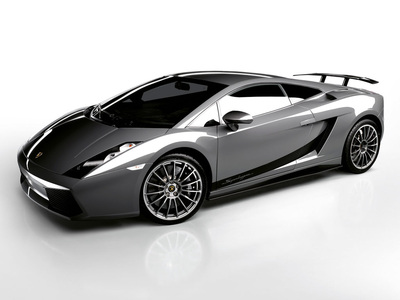| Rev To The Limit |
LAMBORGHINI
ABOUT LAMBORGHINI
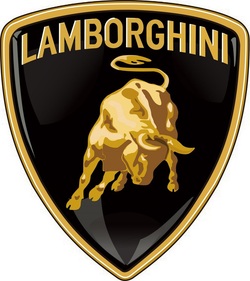
The Lamborghini story is one of legends. Ferruccio Lamborghini was a self made millionaire who made a fortune building tractors from army surplus.
He owned a Ferrari that kept giving problems with the clutch. The local workshop couldn't fix this problem so Ferruccio decided to drive to Modena and confront Enzo Ferrari himself. |
|
Enzo, who was known for his arrogance, told this 'farmer' to take a walk, Ferruccio was furious and at that moment decided to show Enzo how he should build GT cars. That's how Lamborghini started. Thank goodness.
LAMBORGHINI COMPANY
|
THE START-UP YEARS
Ferruccio Lamborghini was born in Italy in 1916. He was fascinated with engines from an early age. During WWII while stationed in Rhodes any cars, trucks or motorcycles that broke down had to be repaired on the spot with reused parts. Ferrucio was known as a magician at fixing engines.
After the war when he returned to his home near Modena and setup a small car and motorcycle repair shop. He soon realized that there was a desperate need for tractors in the area in which he lived. He built one tractor a month from derelict military vehicles and as Italy's economy grew so did demand for tractors, thus making him very rich and very successful. He also started manufacturing oil burners and air-conditioning systems after his tractor plant started making lots of money, it turned out his second business also made big money so Ferruccio Lamborghini became one the wealthiest men in Italy. He could afford just about everything he wanted, including high speed GT cars like the Mercedes SL300 and Ferrari he owned alongside the Jaguar he liked very much. There is a now famous story about how he was frustrated with problems he had with a clutch in a Ferrari (a Ferrari 250 GT), and went to visit Enzo Ferrari who's factory was nearby. Enzo basically told him to buzz off. Lamborghini decided to build his own car company and give Enzo a run for his money. Automobili Lamborghini SpA was founded in early 1963 . The building was erected in only eight months near Bologna, in SantAgata Bologna. He decided too build his own car with a V12 engine. For the design he found a very talented engineer named Giampaolo Dallara who had previously worked on a Ferrari V12 engine. This engine had 4 cams, a short stroke and 4 big bore valves per cylinder. It developed a surprising 350 HP. It was an all aluminum engine with a crankshaft supported by seven main bearings. A body designed by Scaglione-Touring was used to house the engine.The Lamborghini "350 GTV" prototype was shown to the public on the Turin Auto Show of 1963. Sales started the following year. The car was called the 350 GT. It was a complete success. Over 130 were sold. The most famous Lambo came next when Ferruccio allowed his engineers to design and construction a new car - the Lamborghini Miura. The Miura made the Lamborghini name legendary. It was a car truly ahead of its time. It shocked even companies like Ferrari and Maserati and is still considered by many the first true supercar. The Miura was first shown on November 1965 at the Turin Auto Show by Ferruccio Lamborghini himself. The engine was transversely mid-mounted, something up to then only seen in real F1 race cars. The design of the body was executed by Marcello Gandini in less than a year, and on the March 1966 Geneva Show it was completed and on display. It looked even better than in Turin. The car was very aggressively styled, and an appropriate name was chosen for it, the Miura. |
This was followed in 1973 at the Geneva Auto Show when Lamborghini shocked the world again with his revolutionary LP400 Countach. Only a prototype was shown. Today it is difficult to realize the impact that car had on everybody at that time. Even now the car is a show stopper! The car at the show was painted in a bright red and with a black suede interior. It showed for the first time, the by now, famous, Lamborghini signature swing up doors. It also displayed unique vertically mounted rear air intakes to go with its powerful 4 Liter engine.
THE ROLLER-COASTER YEARS
The first problems came in 1974, just after the Lamborghini Trattrice received a major setback, a massive order for tractors was cancelled, and Ferruccio lost a lot of money over it, he already upgraded the tractor factory to be able to build the numbers required and bought most of the raw materials needed to do so. His personal fortune was still large, but he decided to sell this factory to SAME, who eventually was taken over by Fiat years later.
During these early seventies, Automobili Lamborghini Spa had the Miura in production and in 1970 they even built 400 cars, the factory was making money for the first time in ten years, and it was becoming very attractive to possible buyers, Ferruccio lost interest in the company after his tractor factory got into trouble and sold a controlling interest of Automobili Lamborghini SpA to Georges-Henri Rossetti, a Swiss industrialist. Ferruccio stated he would still remain at the factory to run it, but the oil-crisis of 1973 made things even worse for Ferruccio and he lost interest completely, soon after this he sold his remaining 49% of the shares to Rene Leimer, also from Switzerland. From this day on, Automobili Lamborghini SpA had nothing to do with its founder anymore, fortunately the new owners kept this name, they didnt get the idea of changing it.
Rossetti and Leimer couldnt get the glorious times back to Lamborghini, even with the Countach, it did sell quite good, but there wasnt any money to pay for the materials needed to build them, some buyers had to wait two years before they would receive their car, and more often than not their cars would be used on Car Shows all over Europe before it was delivered to the dealer. EmilianAuto in Bologna and Achilli Motors in Milan, two major Lamborghini dealers payed the Countachs ordered by them in advance to be able to get one finished for their customers
A bright moment came when Automobili Lamborghini SpA managed to get the building contract for the new BMW M1, a mid-engine road car that was ultimately designed for Group 5 racing. But they used the funds from BMW to design and built the Cheetah, a car that looked promising but didnt live up to the expectations. By then it was too late to save the BMW M1 project and the German car manufacturer took their business elsewhere.
During these early seventies, Automobili Lamborghini Spa had the Miura in production and in 1970 they even built 400 cars, the factory was making money for the first time in ten years, and it was becoming very attractive to possible buyers, Ferruccio lost interest in the company after his tractor factory got into trouble and sold a controlling interest of Automobili Lamborghini SpA to Georges-Henri Rossetti, a Swiss industrialist. Ferruccio stated he would still remain at the factory to run it, but the oil-crisis of 1973 made things even worse for Ferruccio and he lost interest completely, soon after this he sold his remaining 49% of the shares to Rene Leimer, also from Switzerland. From this day on, Automobili Lamborghini SpA had nothing to do with its founder anymore, fortunately the new owners kept this name, they didnt get the idea of changing it.
Rossetti and Leimer couldnt get the glorious times back to Lamborghini, even with the Countach, it did sell quite good, but there wasnt any money to pay for the materials needed to build them, some buyers had to wait two years before they would receive their car, and more often than not their cars would be used on Car Shows all over Europe before it was delivered to the dealer. EmilianAuto in Bologna and Achilli Motors in Milan, two major Lamborghini dealers payed the Countachs ordered by them in advance to be able to get one finished for their customers
A bright moment came when Automobili Lamborghini SpA managed to get the building contract for the new BMW M1, a mid-engine road car that was ultimately designed for Group 5 racing. But they used the funds from BMW to design and built the Cheetah, a car that looked promising but didnt live up to the expectations. By then it was too late to save the BMW M1 project and the German car manufacturer took their business elsewhere.
The oil crisis of the 70's started to made sales of high performance cars difficult. Production art the factory was plagued with budget and parts supply problems. People gave up waiting for cars with two year back orders. A wealthy Canadian, Walter Wolf, played a major role is supporting Lamborghini and developing the Countach during these difficult times.
In 1978 the company declared bankruptcy. An Italian court was appointed to find a buyer. The Swiss based Mimran brothers were able to save the factory, although at first they were only allowed to manage it as a test of their capabilities. In July 1980 Patrick Mimran, the youngest of the two brothers entered the factory after his financial value was verified to be unlimited by his Swiss bank. The name was changed into Nuova Automobili Ferruccio Lamborghini SpA, and Patrick Mimran, although he was very young to be a manager did get Lamborghini back to where it belongs, at the top of the exotic car market.
|
During the latter Eighties, several developments of the Countach were made under direct supervision of both Patrick Mimran and Giulio Alfieri. Just as things were going well, the Mimran brothers sold the company to Chrysler Corporation. This was a big surprise at the time. Chrysler support however was just what the company needed at that time. They were working on a Countach successor -- the Diablo. Chrysler kept the winning team together in Italy. While the cultures of the two companies were different and things got stressful between the management groups, they did succeed in bringing the vast resources of Chrysler to bear on the design, pollution controls, and new manufacturing techniques etc. for the new car.
The reviews of the new car were great, it was an outstanding success. The new Lamborghini Diablo got rave reviews everywhere it went. However in another twist of faith, in 1994 Chrysler fell upon hard times and had to sell the company. It was bought by an Indonesian investment group headed by Tommy Suharto of the well known Suharto family. Unfortunately in the late 90's an economical crisis started to hit the Indonesian owners hard and the much needed money for research on a successor to the Diablo started to dry up. Fortunately the German company Audi had an interest in Lamborghini. On August 4 1998, in a complex series of transactions Audi AG became the sole owner of Automobili Lamborghini. As in the case of the Chrysler buyout, this could not have been a better time for Lamborghini. Audi took an active role in designing the Murcielago and brought to the table again the vast resources of a major automobile company to develop and produce another exotic car. The entire Board of Director was replaced by managers from Audi AG. To start working Audi AG already invested millions in the factory to get the research for the Canto back on its feet. Since the Audi AG takeover the future of this 'small' factory is looking better every day, once again there is enough capital to develop the successor of the famous Diablo, and even a smaller 'entry-level' follow-up to the Jalpa is under consideration. Some sources even state that during the first years of the next millennium, a new car will be designed like the Espada in it's time, even a new off-road utility vehicle is still possible, things we can only wait for and hope everything keeps going in Italy without too many German influence from Audi AG. |
LAMBORGHINI CARS
The current Lamborghini lineup is a special group.
A two-seater hyper sportscar that was unveiled at the Geneva Motor Show in 2011, the Aventador replaced the Murciélago and uses a 6.5-litre, V12 engine which produces 700 HP at 8,250 rpm and 509 lb-ft at 5,500 rpm. This output is just enough to sprint the car from 0-60 mph in just 2.9 seconds while blasting off a top speed of 217 mph. It looks as fast as it goes, with a space age design that turns heads.
In addition to the Aventador is the Aventador Roadster, a head-spinningly cool thing, a modern masterpiece of product design and beautifully well made, too. It costs a tone and adds an extra layer of sensory overload to an experience that was hardly lacking in that department. Ridiculously, 300 grand is arguably almost value for money in the absurd private jet/superyacht/Miami penthouse world a car like this lives in.The Aventador's power, pace and appearance inch it into the Veyron's mega-money realm. And while the 12C and 458 Spider are less expensive and more fun to drive, the Aventador Roadster gets round that by smashing your senses in every possible way.
Finally, to close out the current Lambo lineup is the Lamborghini Huracan. After ten years of production and 14,022 sales – around half of Lamborghini’s all-time total – the Gallardo’s shoes are particularly large and daunting ones to fill, but the Huracan looks and sounds willing and able to try. It looks bold, a mix of Aventador styling cues with a much tauter, more squat shape. It means business.
A two-seater hyper sportscar that was unveiled at the Geneva Motor Show in 2011, the Aventador replaced the Murciélago and uses a 6.5-litre, V12 engine which produces 700 HP at 8,250 rpm and 509 lb-ft at 5,500 rpm. This output is just enough to sprint the car from 0-60 mph in just 2.9 seconds while blasting off a top speed of 217 mph. It looks as fast as it goes, with a space age design that turns heads.
In addition to the Aventador is the Aventador Roadster, a head-spinningly cool thing, a modern masterpiece of product design and beautifully well made, too. It costs a tone and adds an extra layer of sensory overload to an experience that was hardly lacking in that department. Ridiculously, 300 grand is arguably almost value for money in the absurd private jet/superyacht/Miami penthouse world a car like this lives in.The Aventador's power, pace and appearance inch it into the Veyron's mega-money realm. And while the 12C and 458 Spider are less expensive and more fun to drive, the Aventador Roadster gets round that by smashing your senses in every possible way.
Finally, to close out the current Lambo lineup is the Lamborghini Huracan. After ten years of production and 14,022 sales – around half of Lamborghini’s all-time total – the Gallardo’s shoes are particularly large and daunting ones to fill, but the Huracan looks and sounds willing and able to try. It looks bold, a mix of Aventador styling cues with a much tauter, more squat shape. It means business.
BEST LAMBORGHINI'S CARS EVER
Lamborghini has made some great cars over the years. Here are some of our favorites.
Lamborghini Reventon
The Lamborghini Reventon was one amazingly out-there car. With a sky-high price of over $1 million, and only 20 ever produced, this was Lamborghini's ode to the fighter jet, with a body that had slashes and straight line cuts that mimicked military jets. The interior carried over the same thee with its own G-force meter and fighter jet type controls.
Lamborghini Murcielago LP 670–4 SuperVeloce
The Murcielago was first in 2001 and was truly the first really modern and bullet proof Lamborghini. The Murcielago had a massive V12 engine with 640 horsepower and a 0-100 MPH time. The Murcielago went through a lot of iterations and constantly added power and refinement over the years. The final Murciélago was the LP 670–4 SuperVeloce in 2009/10 and is our favorite.
Lamborghini Gallardo LP 570-4 Superleggera
The 2010 LP560-4 version of Gallardo was a special car. The engine has a 562 horsepower V10 that catapults the Gallardo to 0-120 MPH in 10 seconds and a top speed of 202mph. It was light, fast and much more agile than the standard Gallardo. With that engine revving to an amazing 8,000rpm, the baby Lambo sounded like a gatling gun. The Superleggeria used lighter components to improve both speed and handling, many commenting on it being a more raw driving experience than rivals.
Lamborghini Miura
The first supercar. This model is pure vintage Lamborghini, it has just the right amount of sleekness and curves that make it very visually appealing. It has a V12, 350 horse power engine and is lighter in weight than most other Lamborghini models. Of the Miura model, there is less than 800 known to be produced and this sports car was discontinued when the Countach came onto the market.
Lamborghini Countach
Easily the most recognizable of any Lamborghini, the Countach inspired many posters and hung on millions of boys rooms in the 70s and 80s. The design was out of this world, with a wedge shape and scissor doors, the Countach was about as sexy as it is possible for a car to be. The Countach was first shown at the1973 Geneva Auto Show as a prototype. Two years later it was ready for production. The car was a show stopper from the very start. Along with all this dazzle came some serious speed and performance. The Countach was powered by a V-12 that changed over the car's 16-year production period (which was from 1974-1990).
Lamborghini Aventador
A two-seater hyper sportscar that was unveiled at the Geneva Motor Show in 2011. The Aventador replaced the Murciélago and uses a 6.5-litre, V12 engine which produces 700 HP at 8,250 rpm and 509 lb-ft at 5,500 rpm. This output is just enough to sprint the car from 0-60 mph in just 2.9 seconds while blasting off a top speed of 217 mph. It looks as fast as it goes, with a space age design that turns heads.
Lamborghini Reventon
The Lamborghini Reventon was one amazingly out-there car. With a sky-high price of over $1 million, and only 20 ever produced, this was Lamborghini's ode to the fighter jet, with a body that had slashes and straight line cuts that mimicked military jets. The interior carried over the same thee with its own G-force meter and fighter jet type controls.
Lamborghini Murcielago LP 670–4 SuperVeloce
The Murcielago was first in 2001 and was truly the first really modern and bullet proof Lamborghini. The Murcielago had a massive V12 engine with 640 horsepower and a 0-100 MPH time. The Murcielago went through a lot of iterations and constantly added power and refinement over the years. The final Murciélago was the LP 670–4 SuperVeloce in 2009/10 and is our favorite.
Lamborghini Gallardo LP 570-4 Superleggera
The 2010 LP560-4 version of Gallardo was a special car. The engine has a 562 horsepower V10 that catapults the Gallardo to 0-120 MPH in 10 seconds and a top speed of 202mph. It was light, fast and much more agile than the standard Gallardo. With that engine revving to an amazing 8,000rpm, the baby Lambo sounded like a gatling gun. The Superleggeria used lighter components to improve both speed and handling, many commenting on it being a more raw driving experience than rivals.
Lamborghini Miura
The first supercar. This model is pure vintage Lamborghini, it has just the right amount of sleekness and curves that make it very visually appealing. It has a V12, 350 horse power engine and is lighter in weight than most other Lamborghini models. Of the Miura model, there is less than 800 known to be produced and this sports car was discontinued when the Countach came onto the market.
Lamborghini Countach
Easily the most recognizable of any Lamborghini, the Countach inspired many posters and hung on millions of boys rooms in the 70s and 80s. The design was out of this world, with a wedge shape and scissor doors, the Countach was about as sexy as it is possible for a car to be. The Countach was first shown at the1973 Geneva Auto Show as a prototype. Two years later it was ready for production. The car was a show stopper from the very start. Along with all this dazzle came some serious speed and performance. The Countach was powered by a V-12 that changed over the car's 16-year production period (which was from 1974-1990).
Lamborghini Aventador
A two-seater hyper sportscar that was unveiled at the Geneva Motor Show in 2011. The Aventador replaced the Murciélago and uses a 6.5-litre, V12 engine which produces 700 HP at 8,250 rpm and 509 lb-ft at 5,500 rpm. This output is just enough to sprint the car from 0-60 mph in just 2.9 seconds while blasting off a top speed of 217 mph. It looks as fast as it goes, with a space age design that turns heads.


